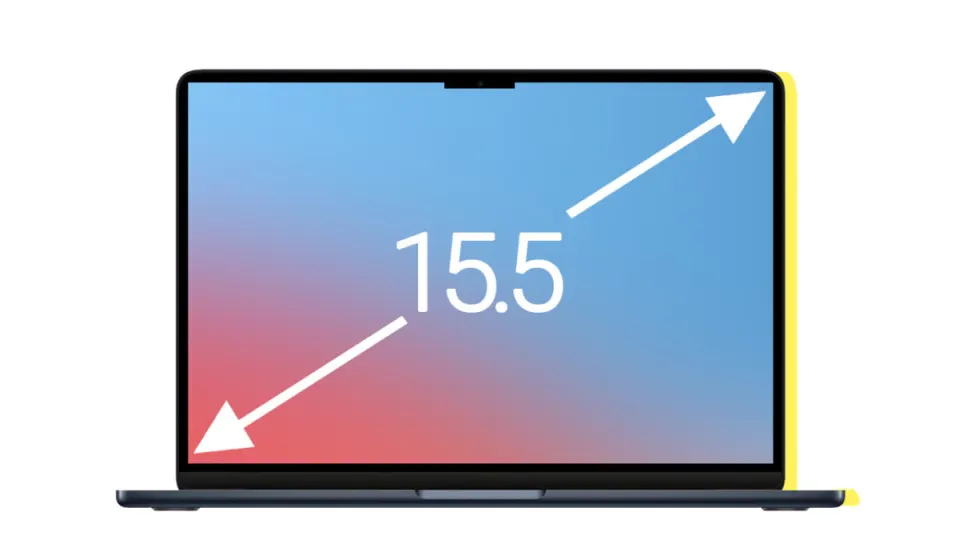The MacBook Air is undoubtedly one of the most popular notebooks sold by Apple. It was also the first MacBook to initiate the transition to Apple Silicon with the M1 chip, an SoC that has managed to take the brand’s notebooks to another level.
Last year, it received a new redesign and also debuted the M2 chip. According to Apple, this improved performance by 18% in CPU and 35% in GPU over the previous generation M1. However, it seems that Apple has some other ace up its sleeve and is already working on what will be the next generation MacBook Air.
A new 15-inch MacBook Air?
As of today, MacBook Airs are only available with a 13.6-inch screen size. New rumors suggest that Apple could launch a new 15.5-inch MacBook Air this spring.
This would make a lot of sense since the MacBook Pros currently sold are available in 14-inch and 16-inch. Adding an extra screen option would give buyers the option of having a larger screen without sacrificing the form factor of the MacBook Air (and at a tighter price point).
Rumors indicate that the unveiling of this alleged 15.5-inch MacBook Air would take place at some point in the spring, and specifically, “early April”. Analyst Ross Young has explained that Apple’s suppliers have already begun producing panels for 15.5-inch displays.
As for the chip that would mount this new MacBook Air, Ming Chi Kuo reports that there will be a choice between the M2 and M2 Pro. The MacBook Air that Apple currently sells is only available with the M2. If true, this would solve one of the big drawbacks of the current model: it is only compatible with an external monitor. By comparison, the M2 Pro found in the Pro range supports up to two simultaneous external displays.

When will we see the next M3 chip?
Beyond the launch of this supposed new MacBook Air in the spring, there is something that all the bitten apple faithful will be wondering: where is the M3 chip?
Considering Apple’s track record and refresh cycles, we will most likely see the next M3 chip by the end of the year. In addition, it will be the first Apple processor to include 3 nanometer technology, which would mean lower power consumption and higher performance.


